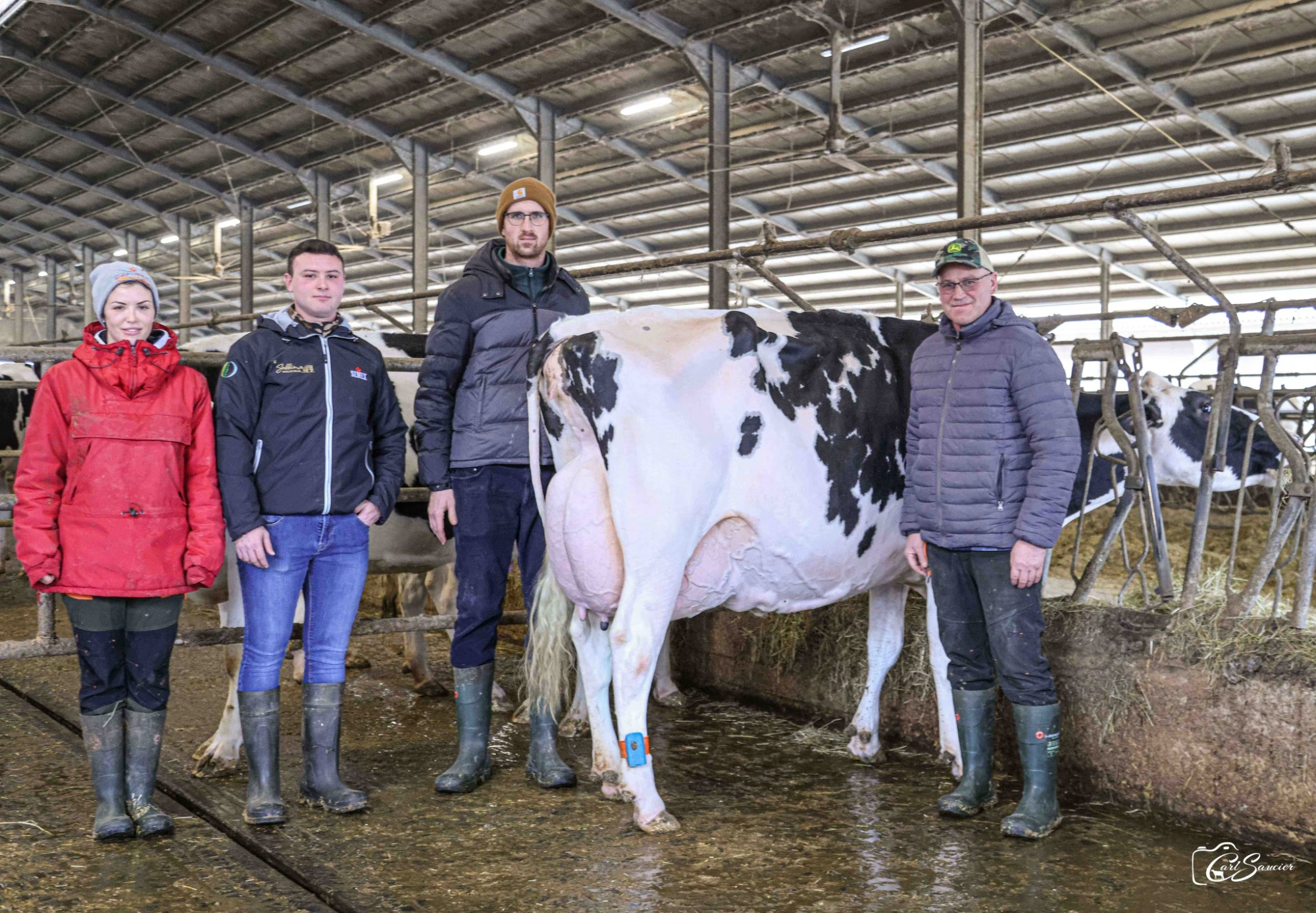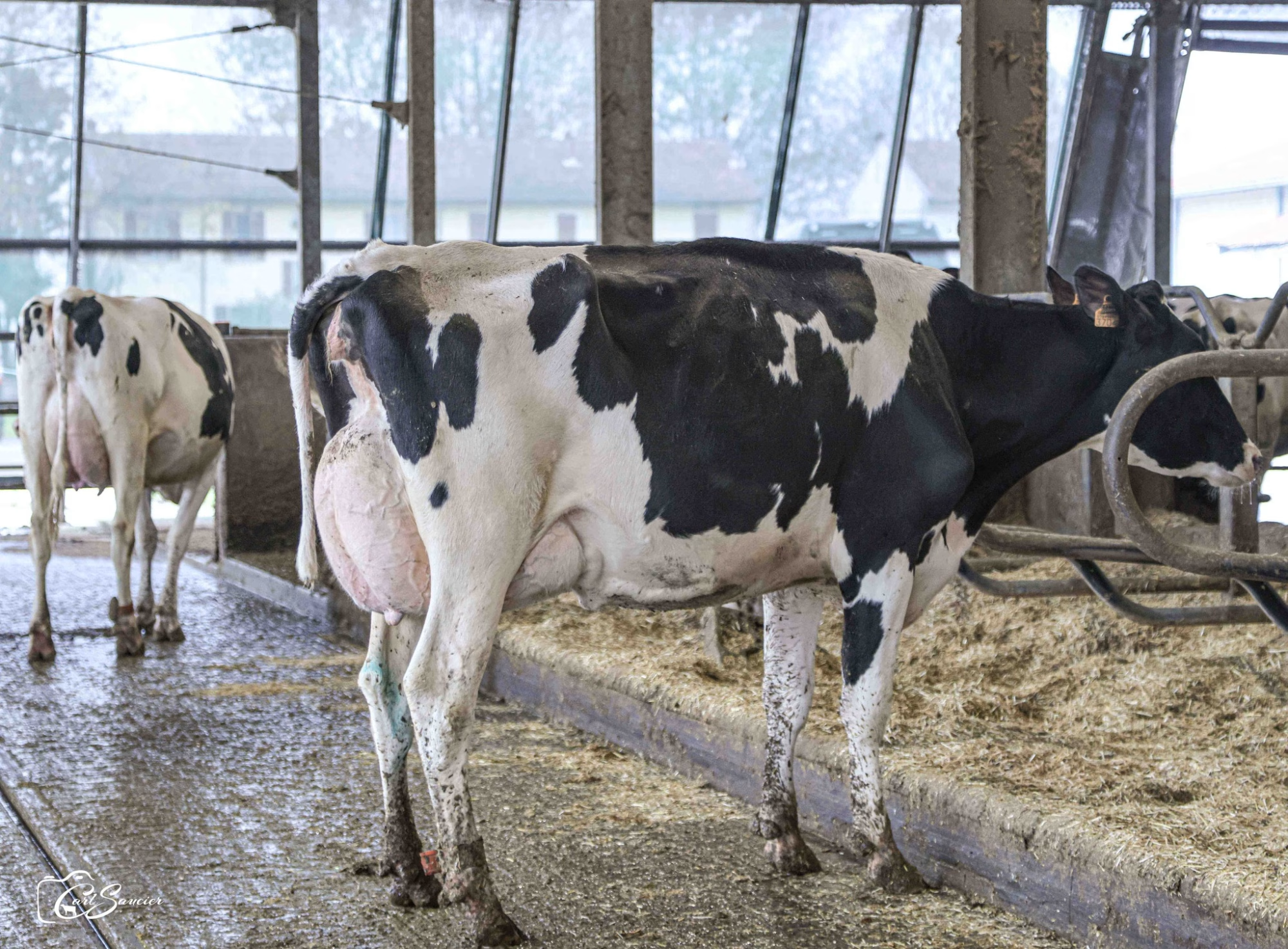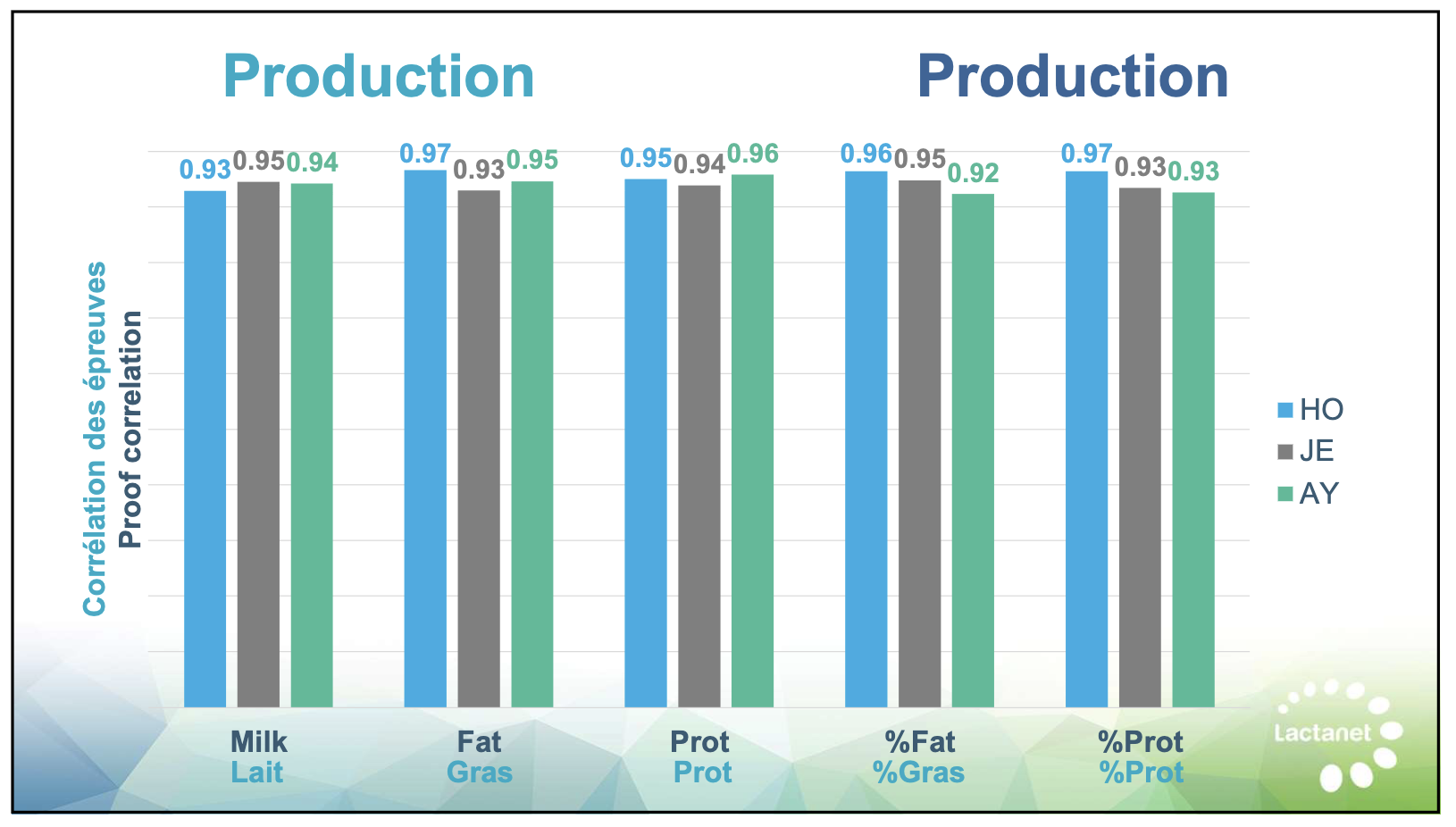Explore what makes Sabbiona Holsteins a world leader in dairy. Why are their almost 500 EX cows a standard of excellence? Discover today.

On a calm spring day in northern Italy, the air carries the legacy of dairy excellence at Sabbiona Holsteins. In the lively fields of Brembio, the Ciserani family’s unwavering commitment to innovation has created a renowned herd known both in Italy and worldwide. From starting with just one cow, Sabbiona Holsteins has grown into a leading farm with 650 milking cows; their first lactation heifers are averaging 84,5 points, averaging 42 kg per day at 4% fat and 3,55 protein, setting standards in genetics and management. This achievement is a testament to the family’s dedication to pushing the boundaries of dairy farming, and a high level of dairy excellence recognized globally.
From Pastures to Prestige: Ireneo Ciserani’s Visionary Blueprint for Dairy Dominance

In the peaceful landscapes of Northern Italy, Ireneo Ciserani started what would become one of the world’s top dairy herds, Sabbiona Holsteins. Beginning with just one cow, Ireneo set out to change the future of dairy farming. His plan was straightforward: build a herd with excellent conformation and high productivity. He achieved this by importing top-notch genetic stock from North America.
In the early 1970s, 100 heifers from Canada and the U.S. arrived at Sabbiona farm. Chosen for their strong genetic traits, these heifers became the foundation for a herd known for its excellence. Ireneo saw how these North American genetics could improve his cows’ looks and milk production.
With Ireneo leading, the herd grew in size and reputation. Using sires from top bloodlines, like Elevation and Valiant, aided this growth. These sires played a crucial role in shaping the herd’s genetics, making Sabbiona Holsteins a model of dairy excellence.
Over the years, Ireneo’s focus on innovation and quality turned the farm into a leading facility. Each new generation of cows was bred to improve essential traits, ensuring progress was always rooted in past successes. Today, Sabbiona Holsteins is proof of Ireneo’s legacy, showcasing his dedication to precise breeding and his forward-thinking choice to bring high-quality genetics from abroad.

Sabbiona Alligator Trendy VG-86 fresh 2nd calf and already milking above 60 kg per day.
Blending Tradition with Genomics: The Genetic Mastery at Sabbiona Holsteins
Sabbiona Holsteins balances high milk production with great cow structure. The Ciserani family leads their herd to excellence by choosing bulls with both qualities. This helps them raise productive and long-lasting cows.
Key cow families like the Annaba and Cruda are crucial to their breeding plan. These families have strong genetics that improve the herd’s appearance and performance. Their cows do well in shows and on farms, demonstrating their challenging genetics.
Sabbiona can predict and improve essential traits using bulls with good genomic data. This combination of reliable cow families and modern genetics is core to their breeding approach, keeping Sabbiona Holsteins at the top of global dairy standards.

l to r… Sabbiona Lambda Sublime VG-86 just fresh 2nd calf, Reserve Intermediate Champion at Verona 2024, Sabbiona Lambda Zwitzerland VG-89 and got a Bullseye son at Semex, and Sabbiona 1st Grade Allie Ex-91.
Shaping Global Dairy Excellence: Sabbiona Holsteins’ Legacy of Precision and Innovation
Sabbiona Holsteins is a shining star in the global dairy industry. With its dedication and success, it is making waves in Italy and internationally. With 28% of its herd rated EXCELLENT, Sabbiona’s influence extends far beyond its Italian borders, showcasing the industry’s global impact.
The herd’s success is evident in its impressive numbers: currently, there are 175 EX cows, compared to a historic total of almost 500. This success is built on strong North American genetics, carefully chosen over generations.

(Delta-lambda x 1st grade x Atwood x Shottle x Goldwin x Storm x Sabbiona Blackstar Annabà EX97)
Has a bullseye son at Semex
Sabbiona’s strength comes from imaginative breeding using sires like Doorman, Goldfarm, and Unix. These sites produce cows with fantastic udders, strong feet and legs, and excellent dairy strength—the core goals of their breeding strategy.
Sabbiona Holsteins influences farms worldwide through sires like Skywalker and Bookie, popular in artificial insemination programs. Their global impact highlights Sabbiona’s dedication and vital role in advancing Holstein genetics.
Recognition has followed, including a top spot in Holstein International’s “Most Influential Breeders of the Last 25 Years” competition [Holstein International Ranking, 2023]. This confirms Sabbiona’s position as a genetic refinement leader within dairy production.

Sabbiona Crushabull Friday.
The Sunlit Symphony of Dairy Excellence in Northern Italy
The early spring sun shines on northern Italy, creating a stunning scene at Brembio. This is where Sabbiona Holsteins rests, and the Ciserani family warmly welcomes us into their world. Under the guidance of Francesco and his son Lorenzo, we are set to see the beauty of their well-chosen herd. Two cows, Sabbiona Tiky and Minorca, highlight their breeding skills. Tiky, a Grand Champion at the 2023 European Open Show and Italian National Show, and Minorca, a remarkable figure, embody the blend of tradition and modern methods, creating a legacy beyond Italy’s borders.

Sabbiona Tiky is a valued Doorman daughter known for her excellent form. She scores a fantastic EX-96, making her the highest-rated Holstein in Italy. Fifty days fresh into her 7th lactation, she shows her strength, producing 10,500 kg/23,150 lb in her previous sixth lactation over 220 days. Her roots are deeply tied to tradition, with twelve generations of Sabbiona heritage featuring notable sires like Skywalker and Goldfarm. Similarly, Sabbiona Minorca EX-92 draws attention with her rich genetic history from Sabbiona Goldfarm, showing the lasting influence of Sabbiona Cruda. Her lineage, connecting to Tri-Day Ashlyn, is a blend of famous ancestors like O-Cosmopolitan, Outbound, Shottle, Durham, and Outside. Her latest fourth lactation resulted in an impressive 14,400 kg/31,750 lb, with much anticipation for her upcoming calving with Mattenhof Harris.

10 yrs old and 7th calves Sabbiona Tiky Ex-96. She is the 12th generation Sabbiona!!!
Tiky and Minorca represent the Ciseranis’ breeding goals. These cows do more than hit targets; they set them with their balanced size, excellent udders, and strong feet and legs. Lorenzo describes the perfect cow as having a size between Tiky and Minorca, with dairyness, balance, and outstanding udder quality. This aim for perfection is more than just an objective; it is an ongoing journey, ensuring that every generation at Sabbiona Holsteins learns from the past while embracing new advancements. The Ciseranis’ breeding goals are not just about producing high-quality cows but about setting new standards for the industry and pushing the boundaries of what is possible in dairy farming.
New Highlight
Among the remarkable achievements of the Ciserani family is Sabbiona Anahita Urus. Urus is recognized as the top sire worldwide for conformation with an impressive score of +19. His other figures are equally impressive: +15 for the mammary system, +11 for feet & legs, a remarkable 3626 GLPI, and an exceptional milk production level of +778.

Sabbiona Haniko Easter VG86
Her son with Dropbox (Sabbiona Hangover) is Semex’s top UDC sire.
They also have a standout son of Dropbox, Sabbiona Hangover. He comes from a line of impressive ancestors: VG-86-1st Lac Haniko x VG-89 Crushabul x EX-92 1st Grade x the famed Jeffrey-Way Mascot Tina. He is Semex’s top UDC sire.
Innovation at the Forefront: Building Tomorrow’s Dairy Legacy Today
It is challenging to keep up with changes in dairy farming. Sabbiona Holsteins has met this challenge with significant investments and a focus on new ideas. Recently, they built a modern facility for 660 milking cows, equipped with state-of-the-art technology and designed to provide the highest level of comfort and care for the cows. This shows how committed the Ciserani family is to staying at the top while caring for their cows.

Sabbiona Holsteins keeps up with new technology. They plan to use a robotic milking system soon, making things more efficient. This new technology is a big step forward, and it fits well with their use of the latest genetic research combined with practical farming.
Balancing tradition and new ideas is key, and Sabbiona Holsteins does this well. With a focus on the future and a commitment to quality, this famous farm looks set to continue leading in dairy farming worldwide.
Passing the Torch: An Unyielding Legacy of Innovation and Tradition in Dairy Farming
As Ireneo Ciserani’s career ends, his impact on the dairy industry is undeniable. He led Sabbiona Holsteins to the top of dairy farming and became a key figure in blending innovation and tradition. Known as “Signor Ireneo,” he was respected for his vision and dedication, passed down to ensure a future of hard work, excellence, and honesty.
The guardians of his legacy, his son Francesco and grandson Lorenzo, are ready to continue this tradition of excellence. They plan to honor Ireneo’s teachings while keeping pace with the industry’s changes. With a mix of respect for history and a focus on the future, they aim to lead through constant innovation. Using genomics and the latest technology, they plan to improve their breeding programs and stay at the cutting edge of elite Holstein production.

The Ciseranis understand the importance of adapting to global dairy trends. They are introducing robotic milking systems, showing their awareness that modernizing is key to staying competitive. Their plans include sustainable practices and exploring new markets to match changing consumer demands and environmental needs. This forward-thinking strategy keeps Sabbiona Holsteins ready for future challenges, helping them remain leaders in the global dairy market.
Ireneo Ciserani’s legacy of pursuing top dairy standards remains a guiding light for the next generation. The Ciseranis are determined to respect their rich history while forging new dairy farming paths.
The Bullvine Bottom Line
Sabbiona Holsteins has become a symbol of excellence in dairy farming. They have developed a herd famous for fantastic udders, strong feet and legs, and impressive dairy strength using careful genetic selection with North American roots. Ireneo Ciserani’s legacy lives on through new generations who continue his vision of keeping the farm at the top of the dairy world.
Sabbiona looks to the future, and genomic advances and new technologies show how precise breeding supports sustainable farming. This blend of nature and science makes us wonder: How will our genetic advancements change dairy farming’s future, and what new opportunities will arise for a more sustainable farm environment?
Key Takeaways:
- Sabbiona Holsteins, founded by Ireneo Ciserani, has grown to become a leading dairy operation in Northern Italy over the past fifty years. It is renowned for its high genetic value and elite conformation.
- The herd at Sabbiona boasts exceptional quality, with 28% of the milking cows rated as EXCELLENT.
- The breeding program, rooted in North American genetics, emphasizes strong cow families and complete bulls to ensure excellent type, udders, and feet and legs.
- Innovative techniques and technologies, such as genomics and the planned introduction of robotic milking parlors, are key to maintaining Sabbiona’s competitive edge in the global dairy market.
- The farm’s strategic operations and future growth plans are based on a deep commitment to understanding genetic opportunities and market trends.
- Leadership at Sabbiona is transitioning smoothly through generations, preserving the legacy and advancing with modern practices.
Summary:
An extraordinary testament to dairy excellence unfolds on the picturesque farm of Sabbiona Holsteins in Northern Italy. Under the visionary leadership of Ireneo Ciserani, starting with just one cow, the farm has crafted a legacy of superior dairy genetics by blending traditional breeding insights with modern genomic advances. This combination sustains and amplifies Ciserani’s commitment to conformation and production. With 28% of their herd rightfully rated EXCELLENT, renowned cow families like Annaba and Cruda are pivotal to their genetic triumphs, resulting in productive and long-lasting cows. This esteemed Italian farm, founded on importing top-notch genetic stock from North America, is now a shining star in the global dairy industry, inspiring the world by demonstrating that an innovative approach intertwined with heritage yields remarkable results. “We want to breed beautiful cows that are productive and last a long time,” states Lorenzo Ciserani, encapsulating the heartfelt mission at Sabbiona as the family, led by Francesco and Lorenzo, continues to nurture a well-chosen herd with superb udders, strong feet and legs, and exceptional dairy strength.
Learn more:
- Sunibelle Dempsey Esprit: A Farewell Tribute to a Swiss’Expo and Holstein Legend
- Austrian Holstein KH Calvo Edelweiss Breaks Record with 97-Point Udder
- Expo Bulle 2024: The Swiss National Holstein Show That Set New Standards
 Join the Revolution!
Join the Revolution!
Bullvine Daily is your essential e-zine for staying ahead in the dairy industry. With over 30,000 subscribers, we bring you the week’s top news, helping you manage tasks efficiently. Stay informed about milk production, tech adoption, and more, so you can concentrate on your dairy operations.







 Join the Revolution!
Join the Revolution!









